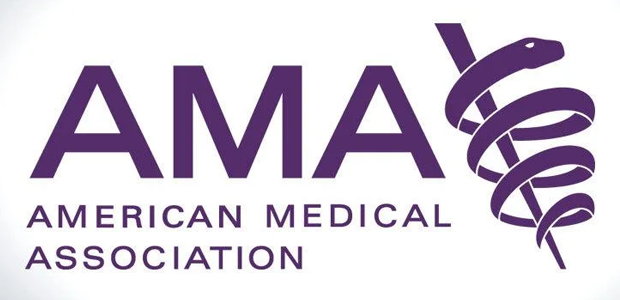The American Medical Association (AMA) announced today the release of the Current Procedural Terminology (CPT®) code set for 2025, marking a significant evolution in medical coding that reflects the healthcare industry’s rapid technological advancement and changing clinical practices. The updated code set, which serves as the foundation for medical billing and documentation across the United States, introduces 420 changes that will take effect on January 1, 2025.
Breaking Down the Changes

The 2025 updates include 270 new codes, 112 deletions, and 38 revisions, representing one of the most substantial annual updates in recent years. The changes reflect the healthcare industry’s continued shift toward precision medicine, digital health solutions, and artificial intelligence-assisted care delivery.
“In today’s rapidly evolving healthcare landscape, maintaining an up-to-date and comprehensive coding system is crucial for both clinical accuracy and operational efficiency,” explained AMA President Bruce A. Scott, M.D. “These updates ensure that healthcare providers can accurately document and bill for new procedures and services while supporting data-driven decision-making across the healthcare system.”
Laboratory Analysis Takes Center Stage
The largest segment of new codes, comprising 37% of additions, focuses on proprietary laboratory analyses, particularly in genetic testing. This emphasis reflects the growing importance of precision medicine and personalized healthcare approaches. The new laboratory codes will enable more specific documentation of complex genetic tests, supporting better patient care and more accurate reimbursement for these sophisticated diagnostic procedures.
Emerging Technologies and Category III Codes
Approximately 30% of the new additions fall under Category III CPT codes, which are specifically designed for emerging technologies and procedures. These temporary codes allow for data collection and assessment of new services before they receive permanent Category I status. This significant allocation of Category III codes demonstrates the AMA’s commitment to supporting medical innovation while maintaining proper oversight and evaluation of new technologies.
Digital Medicine Evolution
The 2025 update includes substantial revisions to Remote Therapeutic Monitoring (RTM) services, reflecting the healthcare industry’s continued shift toward virtual care delivery. Code 98975 has been expanded to encompass digital therapeutic interventions, while codes 98976–98978 have been modified to better account for device supply and data transmission aspects of RTM services. These changes acknowledge the growing importance of remote patient monitoring and digital health solutions in modern healthcare delivery.
Artificial Intelligence Integration
In a noteworthy development, the CPT code set continues to expand its coverage of AI-assisted medical services.
Building on the AI Taxonomy introduced in 2023, seven new Category III codes have been established to classify AI applications across different medical specialties:
- Cardiology: New codes for AI-augmented ECG analysis (0902T and 0932T)
- Chest Imaging: Four new codes (0877T–0880T) for AI-assisted medical chest imaging interpretation
- Urology: Code 0898T for AI-enhanced image-guided prostate biopsy
These codes distinguish between assistive, augmentative, and autonomous AI applications, providing a framework for documenting the level of AI involvement in patient care.
Surgical Advances
The general surgery section has received significant updates to reflect modern surgical techniques and approaches. New codes (15011–15018) have been introduced for innovative skin graft procedures in wound care, while codes 49186–49190 address advanced techniques for abdominal tumor removal. These additions enable more precise documentation of complex surgical procedures and support appropriate reimbursement for these specialized services.
Implementation and Education
To support healthcare providers in implementing these changes, the AMA has announced several educational initiatives:
- The CPT & RBRVS 2025 Annual Symposium, scheduled for November 2024, will offer comprehensive guidance on the new code set
- Updated resources will be available through the AMA Storefront on Amazon, including the CPT 2025 Professional Edition codebook
- Digital solutions will be accessible via the AMA Intelligent Platform, including the CPT 2025 Standard Data File
Impact on Healthcare Delivery
These updates are expected to have far-reaching effects on healthcare delivery and administration:
- Improved Documentation: More specific codes will enable better documentation of complex procedures and emerging technologies
- Enhanced Data Analytics: Updated codes will support more accurate healthcare data collection and analysis
- Better Resource Allocation: More precise coding will help healthcare organizations better track resource utilization and outcomes
- Streamlined Reimbursement: Clear coding guidelines for new technologies will facilitate more efficient billing processes
The Role of the CPT Editorial Panel
The CPT Editorial Panel, an independent body convened by the AMA, manages the code set updates through an open editorial process. This panel includes representatives from various healthcare stakeholders, ensuring that the code set remains responsive to the needs of the entire healthcare community.
“The CPT code set continues to evolve as the trusted language of medicine,” noted Dr. Scott. “Through careful consideration of emerging technologies and changing clinical practices, we ensure that healthcare providers have the tools they need to accurately document patient care and support optimal outcomes.”
Looking Ahead
As healthcare continues to evolve, the CPT code set will remain a crucial tool for standardizing medical documentation and facilitating efficient healthcare delivery. The 2025 updates demonstrate the AMA’s commitment to maintaining a coding system that reflects contemporary medical practice while preparing for future innovations in healthcare delivery.
Healthcare providers are encouraged to familiarize themselves with these changes well before their January 1, 2025 implementation date. The AMA will continue to provide resources and support to ensure a smooth transition to the updated code set, maintaining the efficiency and effectiveness of medical coding across the United States healthcare system.

